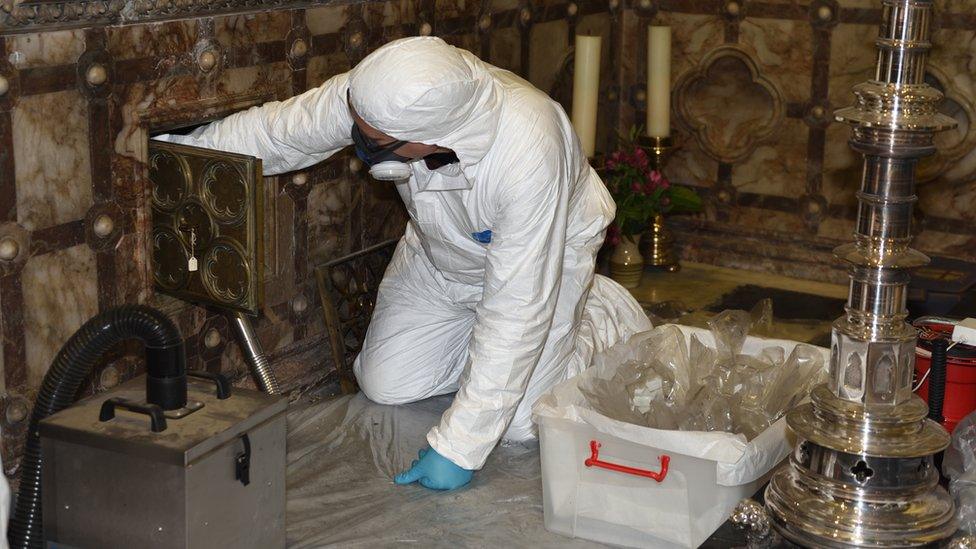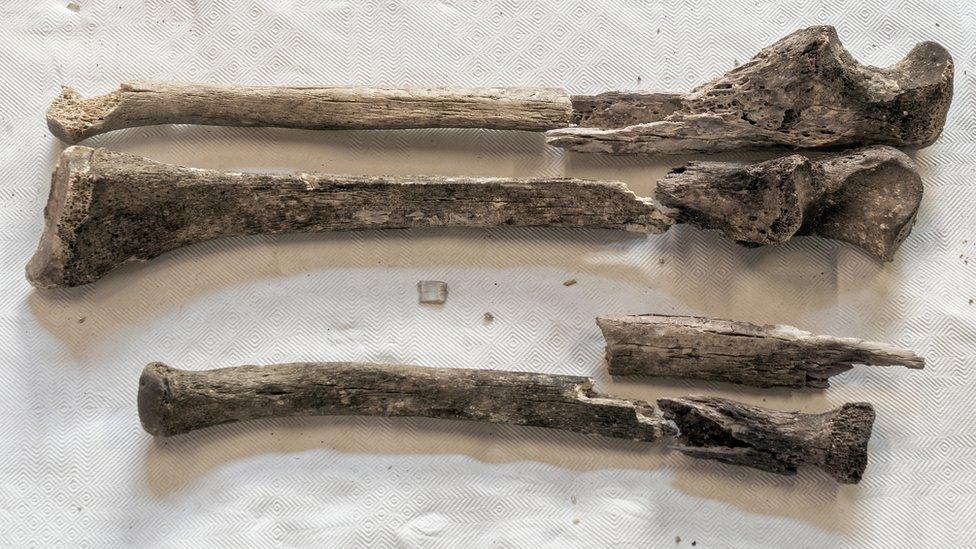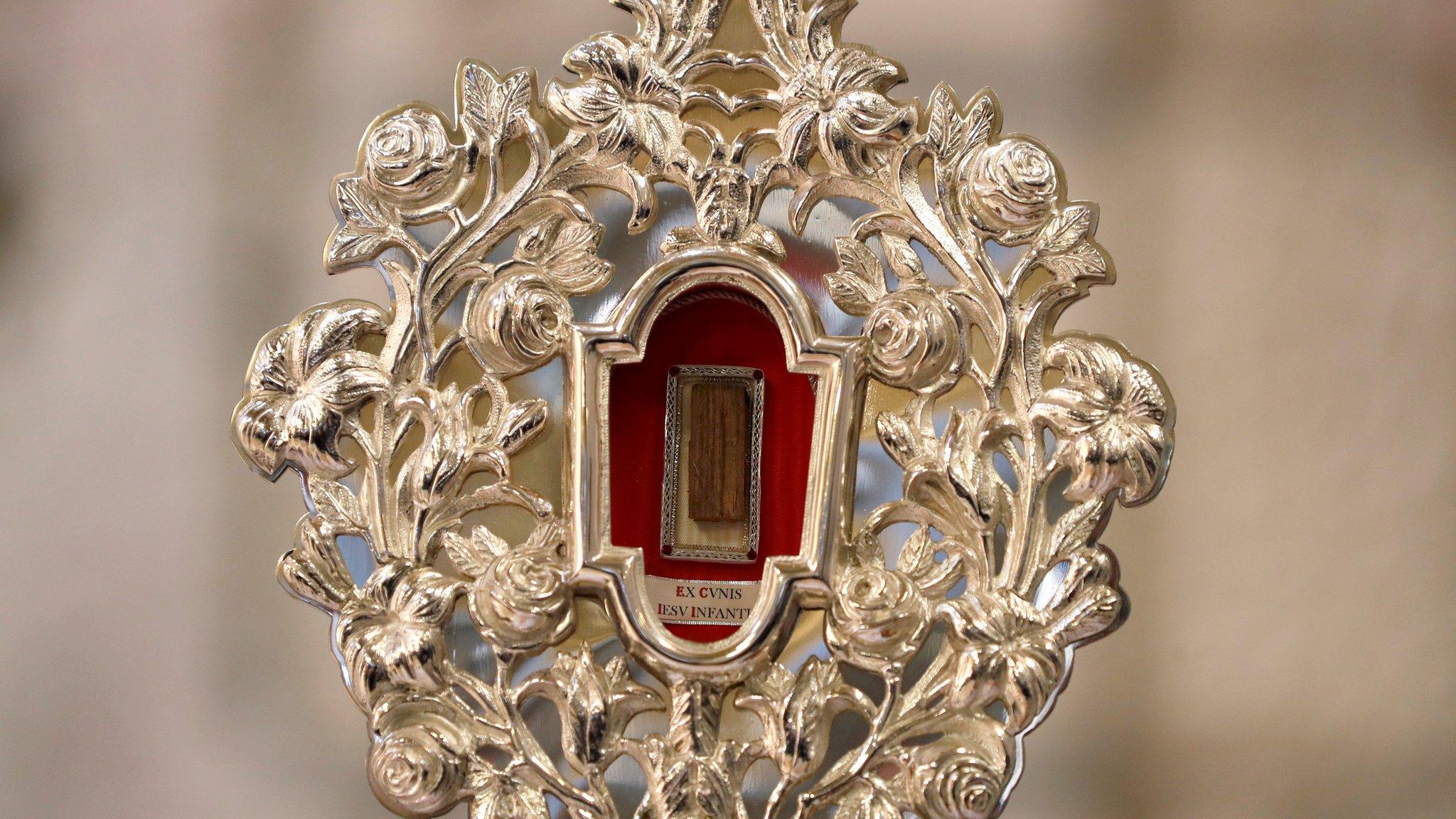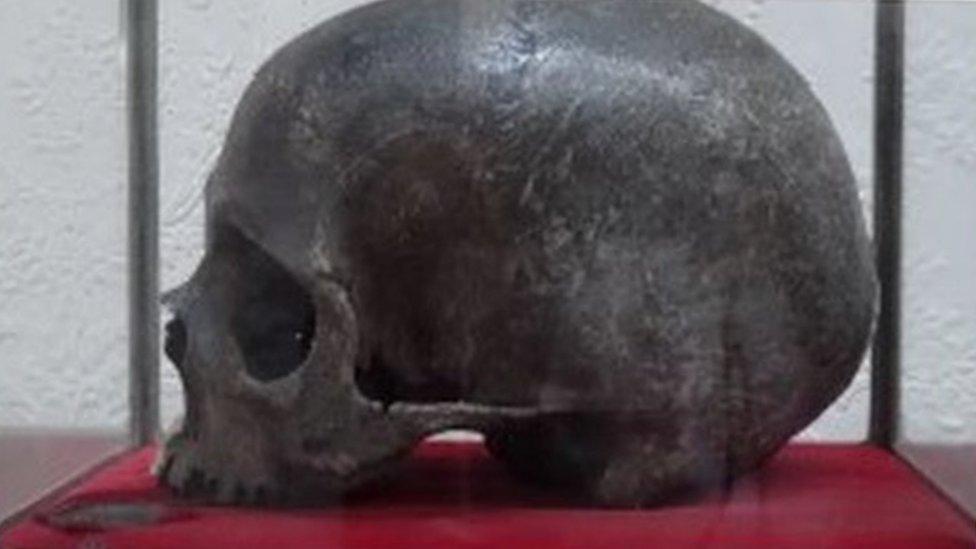St Eanswythe: Bones of Anglo-Saxon saint found in church wall
- Published

The relics had been hidden in a wall in the Church of St Mary and St Eanswythe in Folkestone
Human remains found hidden inside the wall of a Kent church are thought to be those of one of the earliest English saints.
The 7th Century bones are believed to belong to St Eanswythe, a Kentish royal saint descended from Anglo-Saxon kings.
She is believed to have founded one of the earliest monastic communities in England in about 660 AD.
The remains at the Church of St Mary and St Eanswythe, in Folkestone, are considered "of national importance".
Eanswythe, the patron saint of the town, is thought to have died in her late teens or early 20s.
'Stunning result'
Dr Andrew Richardson, from the Canterbury Archaeological Trust, said: "It now looks highly probable that we have the only surviving remains of a member of the Kentish royal house, and of one of the earliest Anglo-Saxon saints."
Carbon-dating of tooth and bone samples suggested a mid-7th Century death date, a spokesman for the Diocese of Canterbury said.
Eanswythe lived during a period which saw the beginning of Christianity in England, with her grandfather, King Ethelbert, being the first king to convert to Christianity under Augustine.
The project to identify the remains, funded by the Heritage Lottery Fund, was a collaboration between the Finding Eanswythe Project and Folkestone Museum.
"This locally-based community partnership has produced a stunning result of national importance," Dr Richardson said.
On its website. the Finding Eanswythe Project, external says: "Over the centuries, Eanswythe's origins and life story have become legendary but the history behind such stories was hard to find and little understood."
Eanswythe's remains escaped being destroyed during the Reformation in the early 16th Century which changed England's official religion from Catholicism to the new Protestant faith.
The bones were hidden in the north wall of the Folkestone church where they remained until being rediscovered in 1835.

The bones were found hidden inside the wall of the church in 1835
The project hopes to fund DNA analysis of the bones.
The Revd Dr Lesley Hardy, director of the Finding Eanswythe project, said: "As you walk through the streets of Folkestone, you are walking, layer upon layer, over ancient history that is now largely hidden from view.
"Finding Eanswythe was about bringing that forgotten history back to the surface."

Fundraising is taking place to pay for DNA analysis of the bones

The project aims for the relics to be housed and put on public display

Follow BBC South East on Facebook, external, on Twitter, external, and on Instagram, external. Send your story ideas to southeasttoday@bbc.co.uk.
Related topics
- Published18 December 2019

- Published30 November 2019

- Published19 June 2018

- Published29 May 2016
